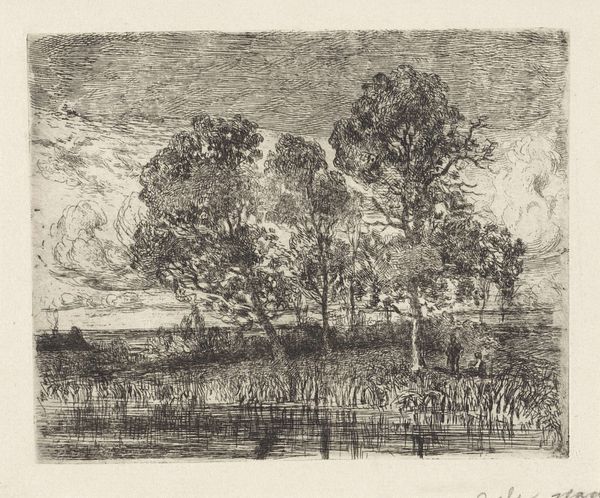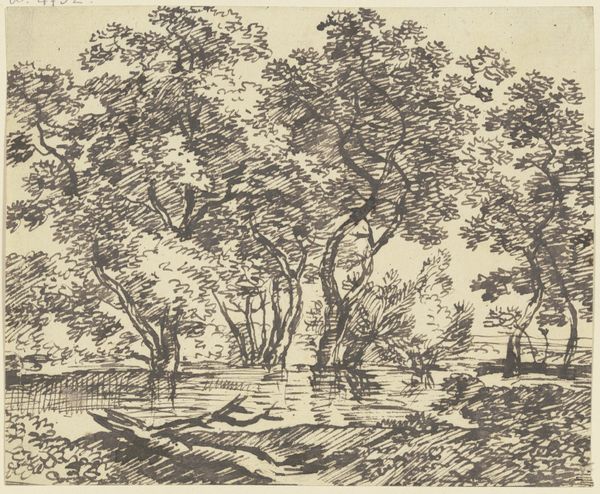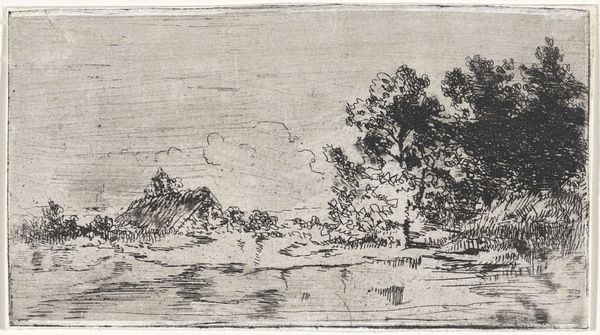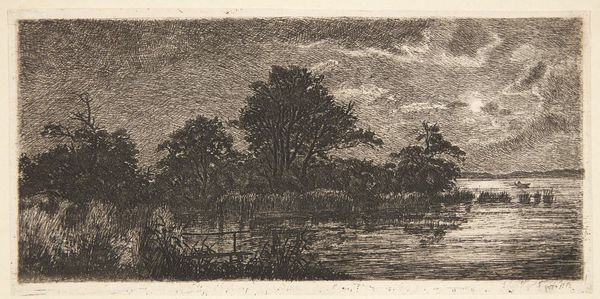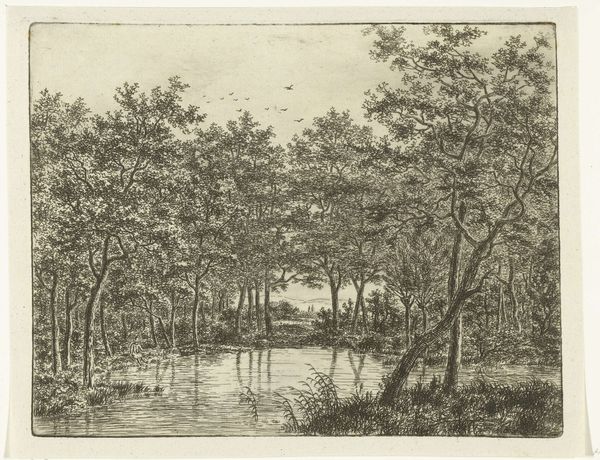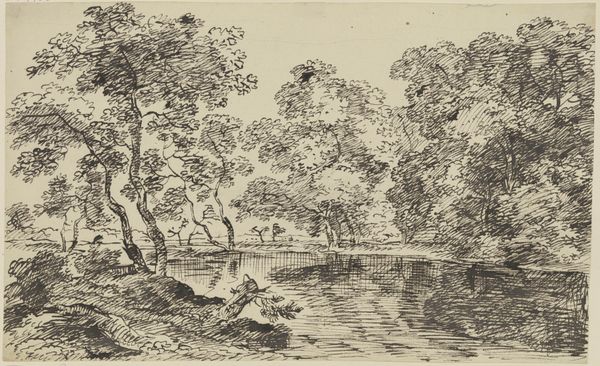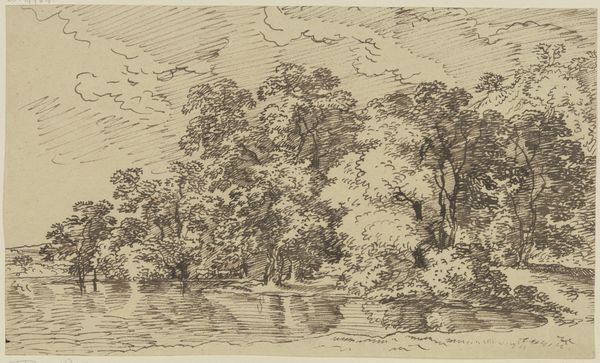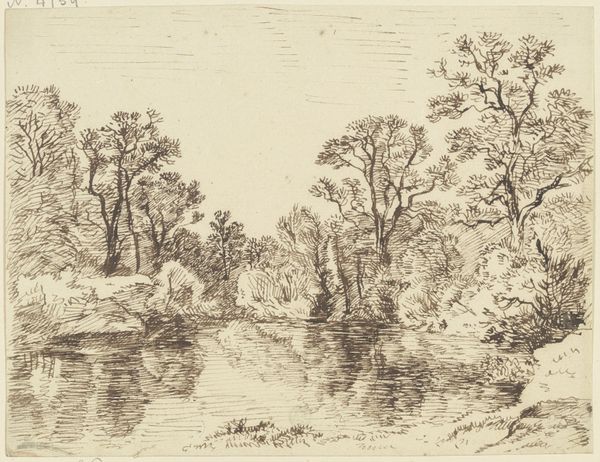
drawing, ink
#
pen and ink
#
drawing
#
baroque
#
dutch-golden-age
#
landscape
#
figuration
#
ink
Dimensions: height 71 mm, width 102 mm
Copyright: Rijks Museum: Open Domain
Lodewijk de Vadder created this small print, titled "Kanaal," using etching, a form of printmaking that democratized image production in the 17th century. Think about the process: the artist would have covered a metal plate with a waxy ground, drawn through it with a needle, and then bathed the plate in acid. This eats away at the exposed lines, which are then inked and printed. This indirect process lends itself to a distinctive graphic style, characterized by fine, slightly irregular lines. The acid creates a texture that is unique to this medium. The tonal qualities of the scene – the dark reflections in the water, the dappled light in the trees – emerge from the density and layering of these etched lines. Etching allowed artists to create multiple originals, expanding the reach of their work beyond the realm of unique paintings. In doing so, they played a crucial role in the development of a visual culture accessible to a broader public. So, considering the print's material and production helps us understand its place in a changing social landscape.
Comments
No comments
Be the first to comment and join the conversation on the ultimate creative platform.
